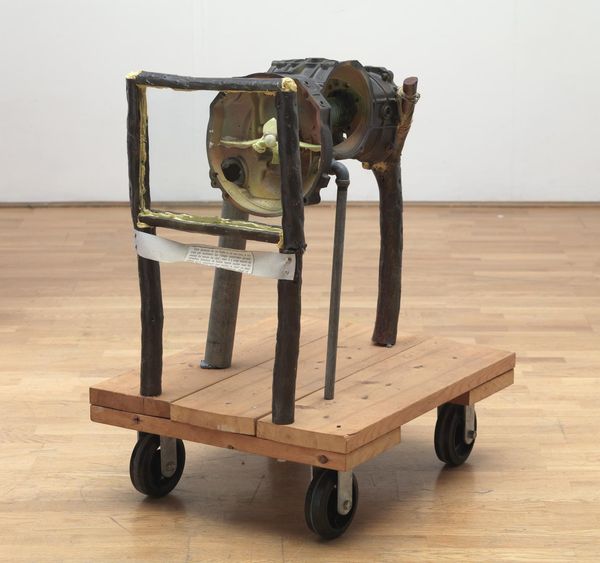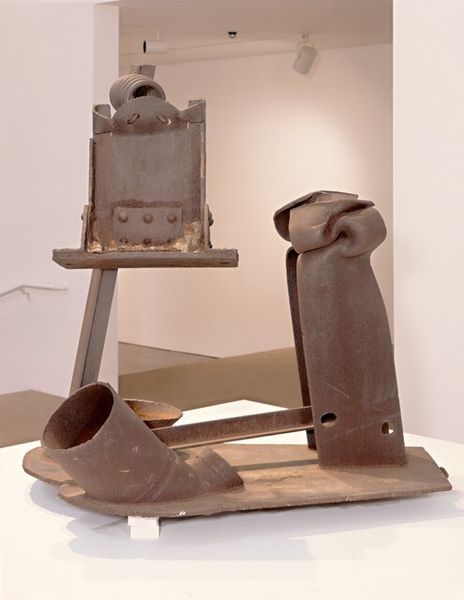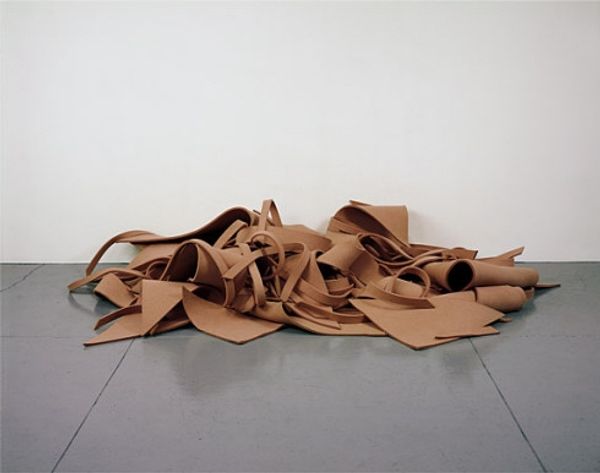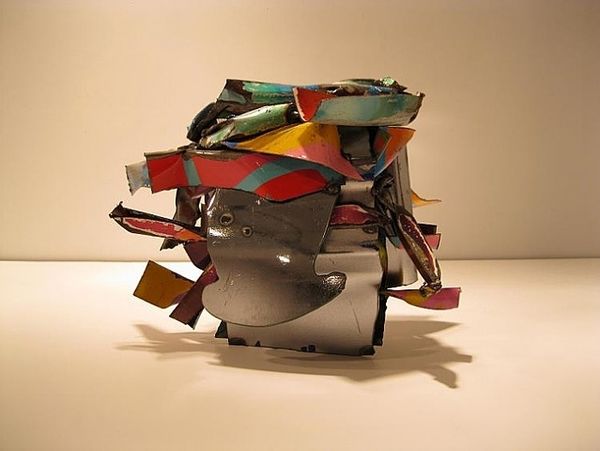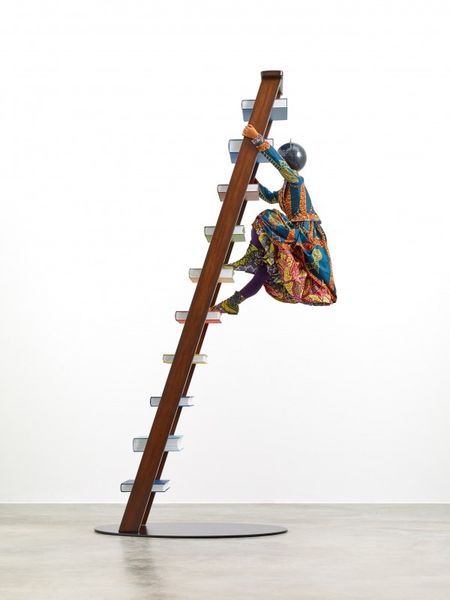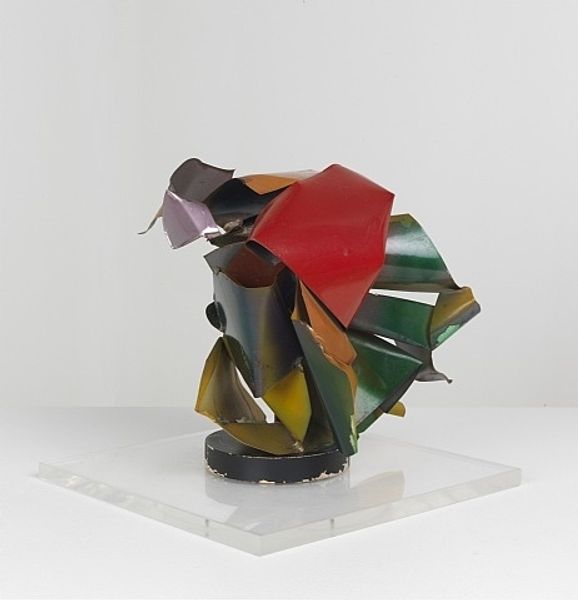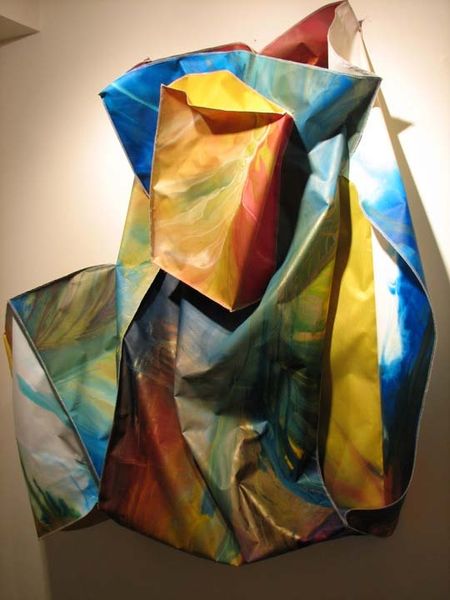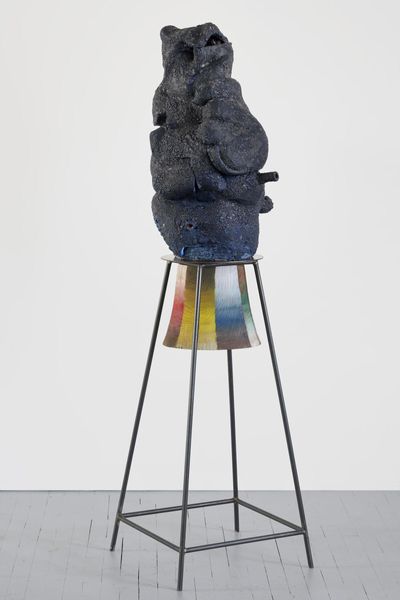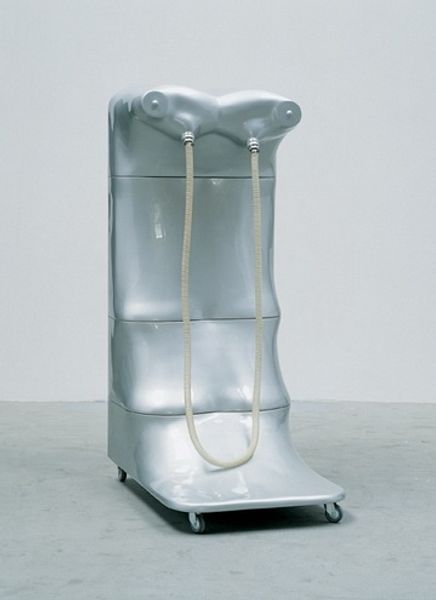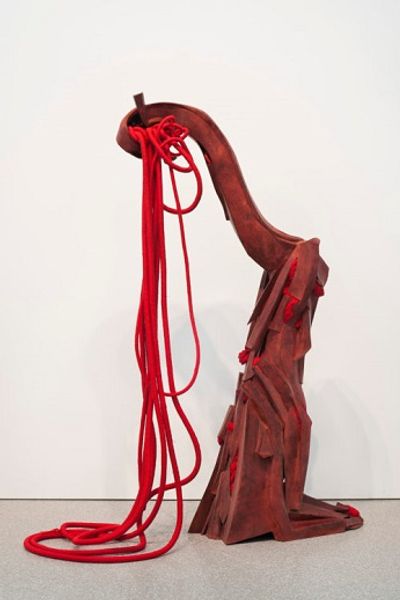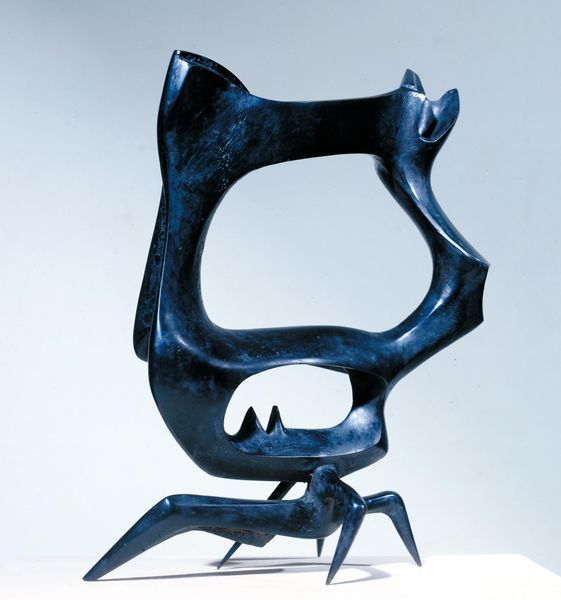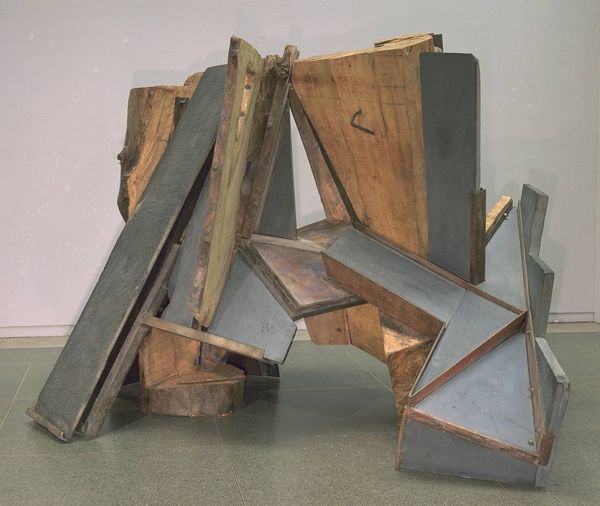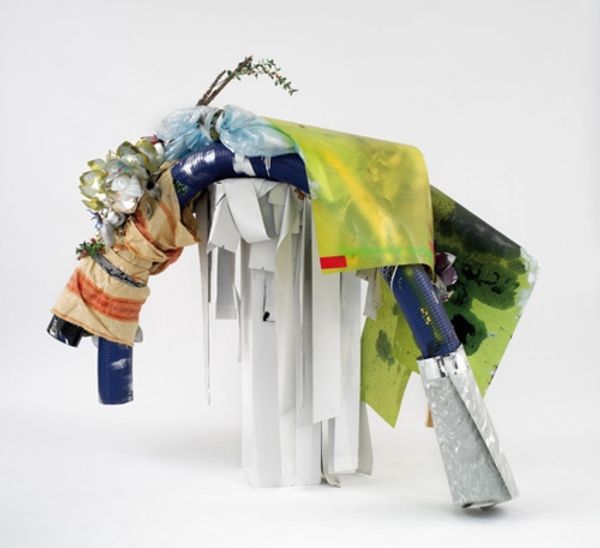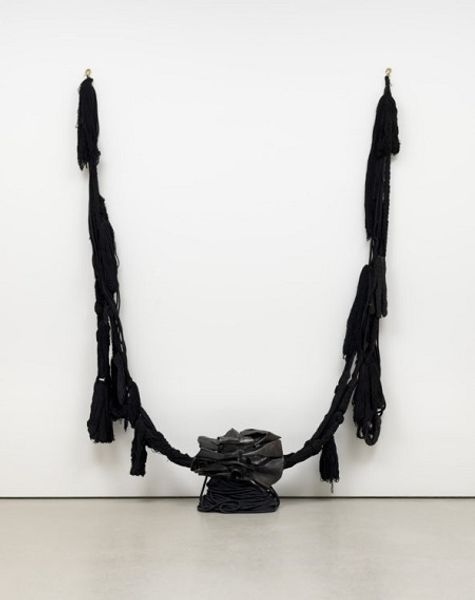
assemblage, metal, found-object, sculpture
#
abstract-expressionism
#
assemblage
#
metal
#
sculpture
#
found-object
#
sculpture
Copyright: John Chamberlain,Fair Use
Editor: So, this is John Chamberlain’s “Jackpot” from 1962, constructed from painted metal. It’s quite the striking piece; the twisted, colorful metal has an almost violent energy. How do you interpret this work? Curator: Immediately, I'm struck by the layering, how the crushed metal evokes a sense of compressed time and experience. Think about the era: 1962, the Cold War, anxieties about the future, the rise of consumer culture… doesn’t this piece echo those feelings of tension and fragmentation? Do you see how the colours simultaneously clash and harmonize, like conflicting emotions vying for dominance? Editor: That’s a really interesting point about compressed time. The sculpture definitely has a sense of chaos and anxiety. The material itself – wrecked metal – speaks of destruction. Curator: Exactly! And what is destruction but a rapid transformation? A forceful reshaping of what once was. The 'Jackpot' title adds another layer. It is, of course, suggestive of unexpected reward, fortune. Editor: It is… almost ironic in the context of this mangled form. I hadn't considered the duality. The visual and title feel… dissonant, I think. Curator: Indeed. The twisted metal could represent the wreckage of pursuing that jackpot, the cost, perhaps. This contrast is powerful precisely because it allows for the intermingling of both those ideas, like two strands wound together, continuously creating novel perspectives, new stories. It reminds me that symbols are never fixed; their meanings evolve. Editor: I see it now – the hope and the disillusionment intertwined. This was such a insightful reading; it’s shifted how I perceive the piece entirely. Thanks! Curator: My pleasure! It’s these interwoven stories, carried within the materials and form that makes studying art such an endless and satisfying journey.
Comments
No comments
Be the first to comment and join the conversation on the ultimate creative platform.
